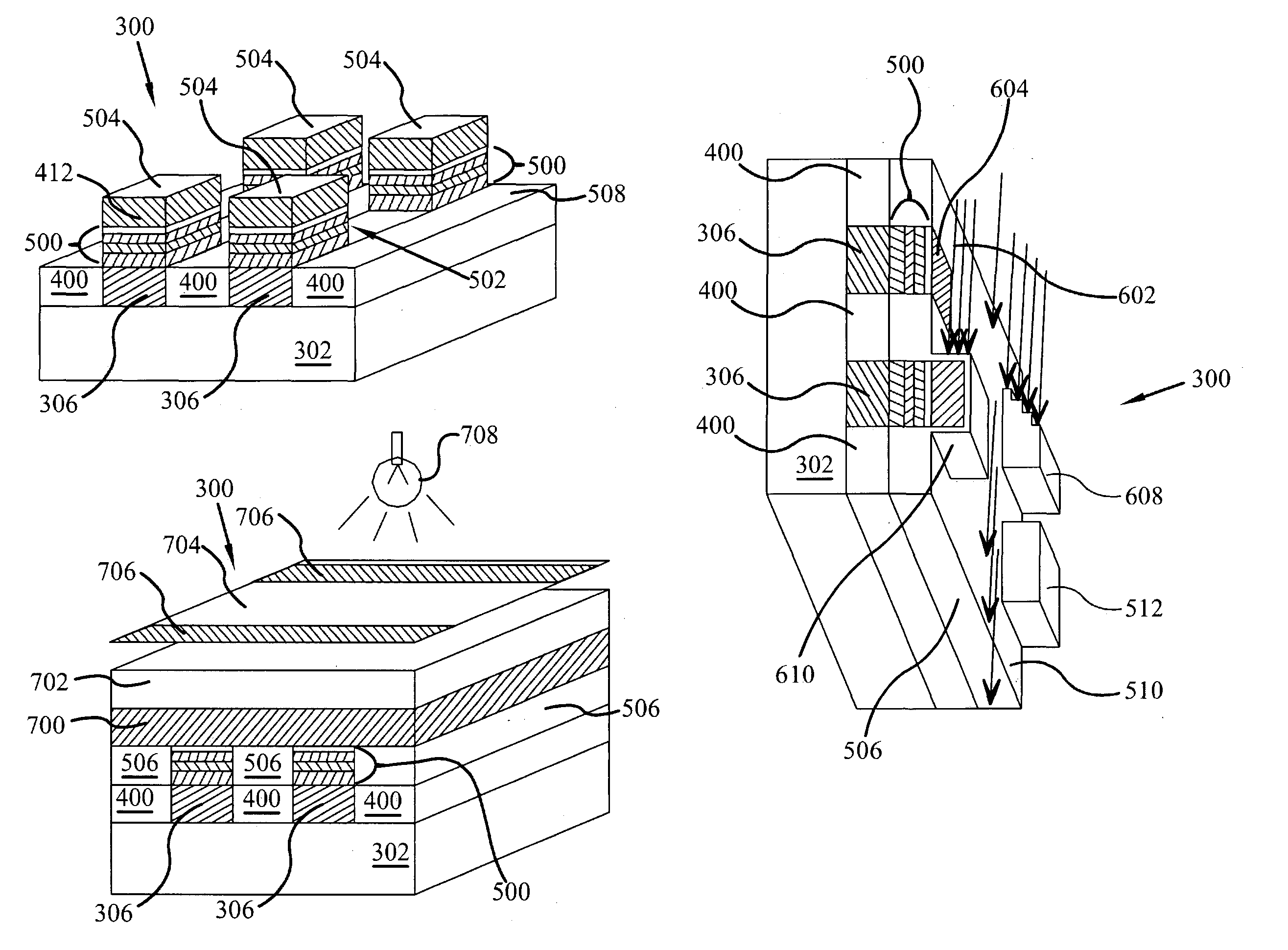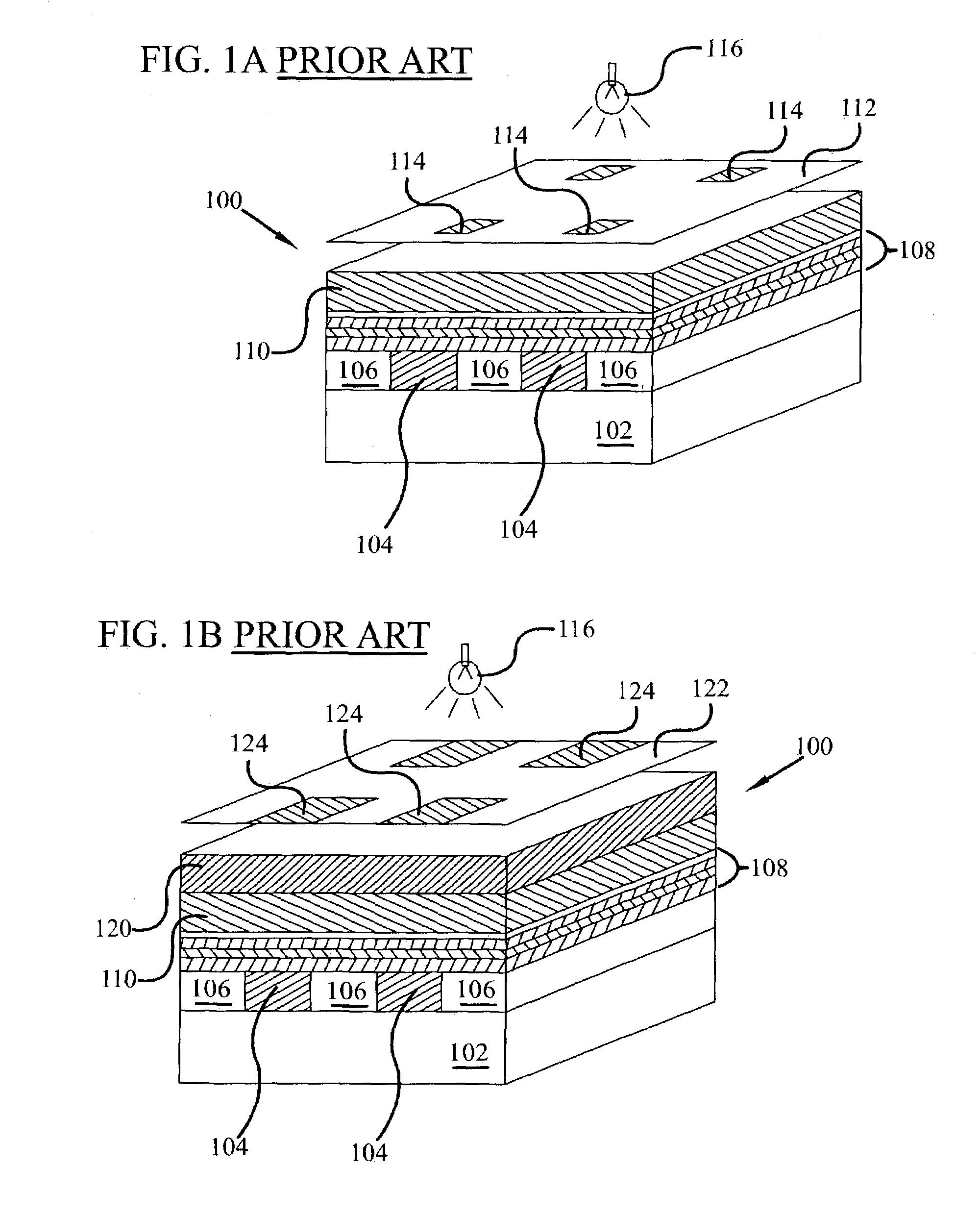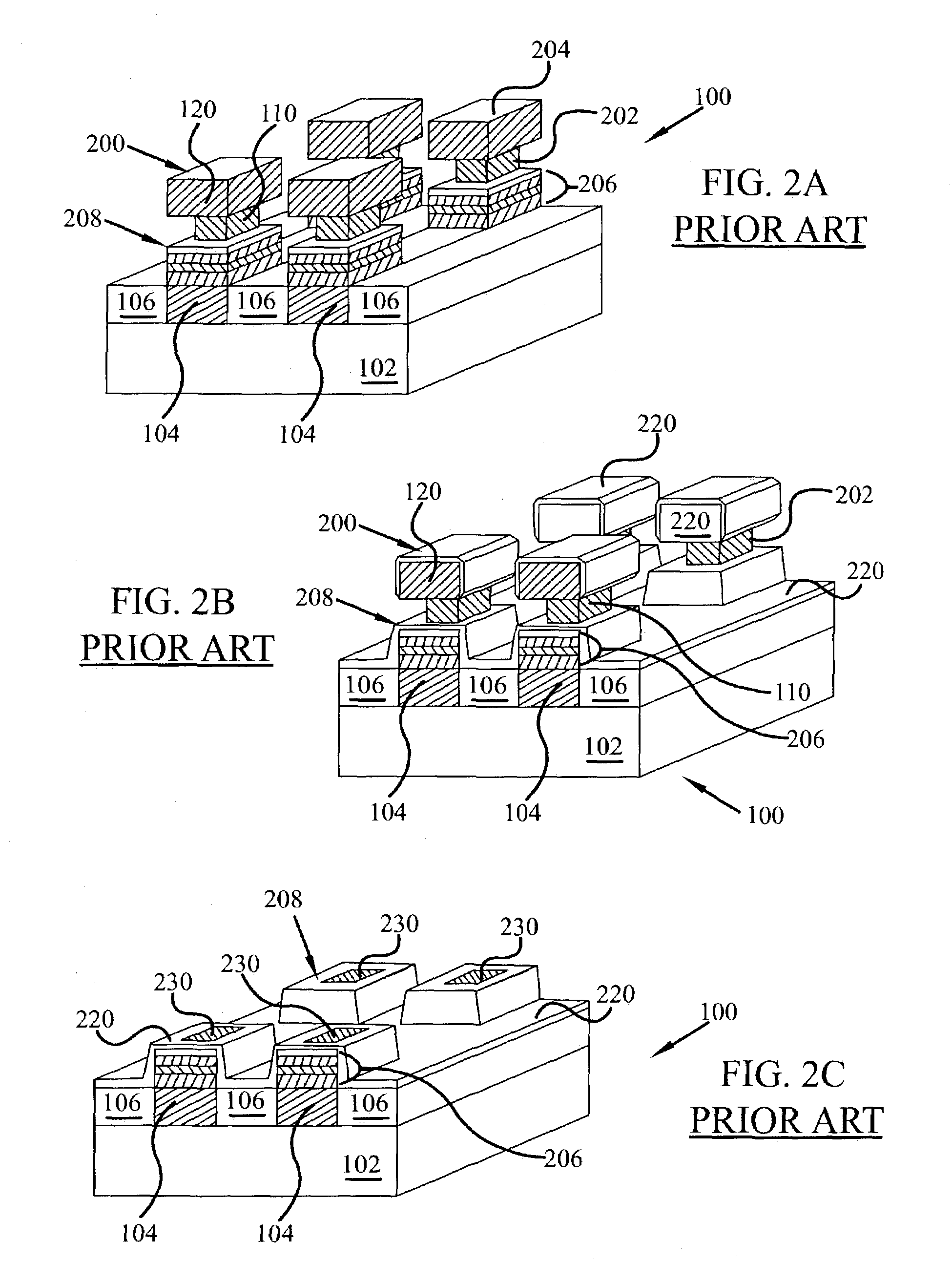Directional ion etching process for patterning self-aligned via contacts
a technology of ion etching and patterning, which is applied in the direction of semiconductor devices, electrical equipment, basic electric elements, etc., can solve the problems of requiring fine precision and control, and affecting the quality of the material,
- Summary
- Abstract
- Description
- Claims
- Application Information
AI Technical Summary
Problems solved by technology
Method used
Image
Examples
Embodiment Construction
[0028]Before proceeding with the detailed description, it is to be appreciated that the present invention is not limited to use or application in conjunction with a specific type of semiconductor fabrication. Thus, although the present invention is, for the convenience of explanation, depicted and described with respect to typical exemplary embodiments relating to magnetic tunnel junction memory such as may be used for magnetic random access memory (MRAM), it will be appreciated that this invention may be applied with other types of semiconductor fabrication where self-aligned via contacts are desired.
[0029]Referring now to the drawings, FIGS. 3A through 5D conceptually illustrate a process of providing self-aligned via contacts in the fabrication of magnetic tunnel junction memory 300 according to an embodiment of the present invention. It will be appreciated that the described process need not be performed in the order in which it is herein described, but that this description is ...
PUM
 Login to View More
Login to View More Abstract
Description
Claims
Application Information
 Login to View More
Login to View More - R&D
- Intellectual Property
- Life Sciences
- Materials
- Tech Scout
- Unparalleled Data Quality
- Higher Quality Content
- 60% Fewer Hallucinations
Browse by: Latest US Patents, China's latest patents, Technical Efficacy Thesaurus, Application Domain, Technology Topic, Popular Technical Reports.
© 2025 PatSnap. All rights reserved.Legal|Privacy policy|Modern Slavery Act Transparency Statement|Sitemap|About US| Contact US: help@patsnap.com



